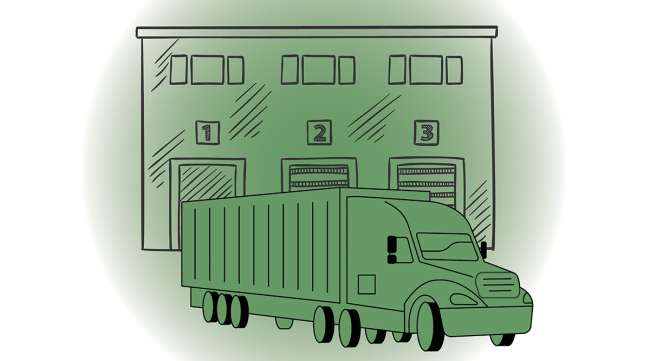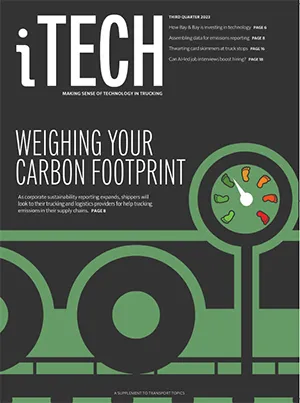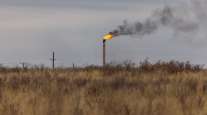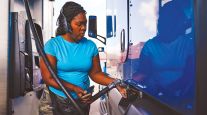Managing Editor, Features and Multimedia
Trucking’s Many Roads to Decarbonization

[Find the latest in trucking technology: Explore this quarter's issue of iTECH]
The trucking industry already has made significant strides on the journey to reduce emissions by deploying cleaner trucks and constantly raising the bar for fuel economy, but this push toward decarbonization will only accelerate in the years ahead.
Freight transportation companies will need to comply with stricter federal and state emissions regulations for commercial vehicles and participate in the aggressive environmental sustainability targets adopted by many large shippers.
So how will the industry achieve these carbon reduction goals?
Lately, much of the industry’s attention has centered on the emergence of battery-electric trucks that can make zero tailpipe emissions a reality in certain shorthaul and regional use cases, along with growing investment in hydrogen fuel cell technology for commercial trucks.
At the same time, the internal combustion engines that have powered commercial trucks for generations will continue to evolve. In the years ahead, diesel engine development could shift toward fuel-agnostic platforms that can run on other, cleaner fuels, including renewable natural gas and renewable diesel, as well as hydrogen combustion.

Clevenger
But cleaner vehicles are only one element of the broader effort to reduce the industry’s carbon footprint.
For starters, transportation companies still have opportunities to improve asset utilization and reduce empty miles. More efficient transportation networks mean less deadhead, less wasted fuel and lower carbon emissions.
Of course, trucking and logistics providers have long worked to optimize routes and load planning, but the advance of asset tracking technology, data analytics and artificial intelligence could unlock further gains in capacity utilization, particularly if more supply chain participants are willing to share data for mutual gain.

Q3 iTECH
►Industry Tackles Carbon Tracking
►Fleets Test Carbon Capture System
►UT Unveils Fleet Sustainability Index
►Card Skimming at Truck Stops
►Q and A: Bay & Bay's Wade Anderson
►Dysart: Using AI for Job Interviews
►Clevenger: Roads to Decarbonization
Explore the Issue!
Transportation and logistics companies also can reduce their carbon footprints by reducing energy consumption at their warehouses, distribution centers and truck terminals through more efficient lighting and electric-powered forklifts and terminal tractors, to list a few examples.
Some factors that contribute to higher emissions, such as traffic congestion, are outside the direct control of trucking operations. Steady improvement in the fuel efficiency of modern trucks is partially offset by the fuel wasted while these trucks sit in traffic jams in areas where population growth has outpaced infrastructure investment.
Meanwhile, tried-and-true methods of improving fuel economy provide the dual benefit of trimming greenhouse gas emissions. Efforts to reduce engine idling and promote driving habits that improve miles per gallon not only add to the bottom line for fleet operators, but also help trim carbon emission levels.
Looking toward the future, all these technologies and strategies could play a role in the decadeslong journey toward a low-carbon freight transportation system.
Want more news? Listen to today's daily briefing below or go here for more info:




